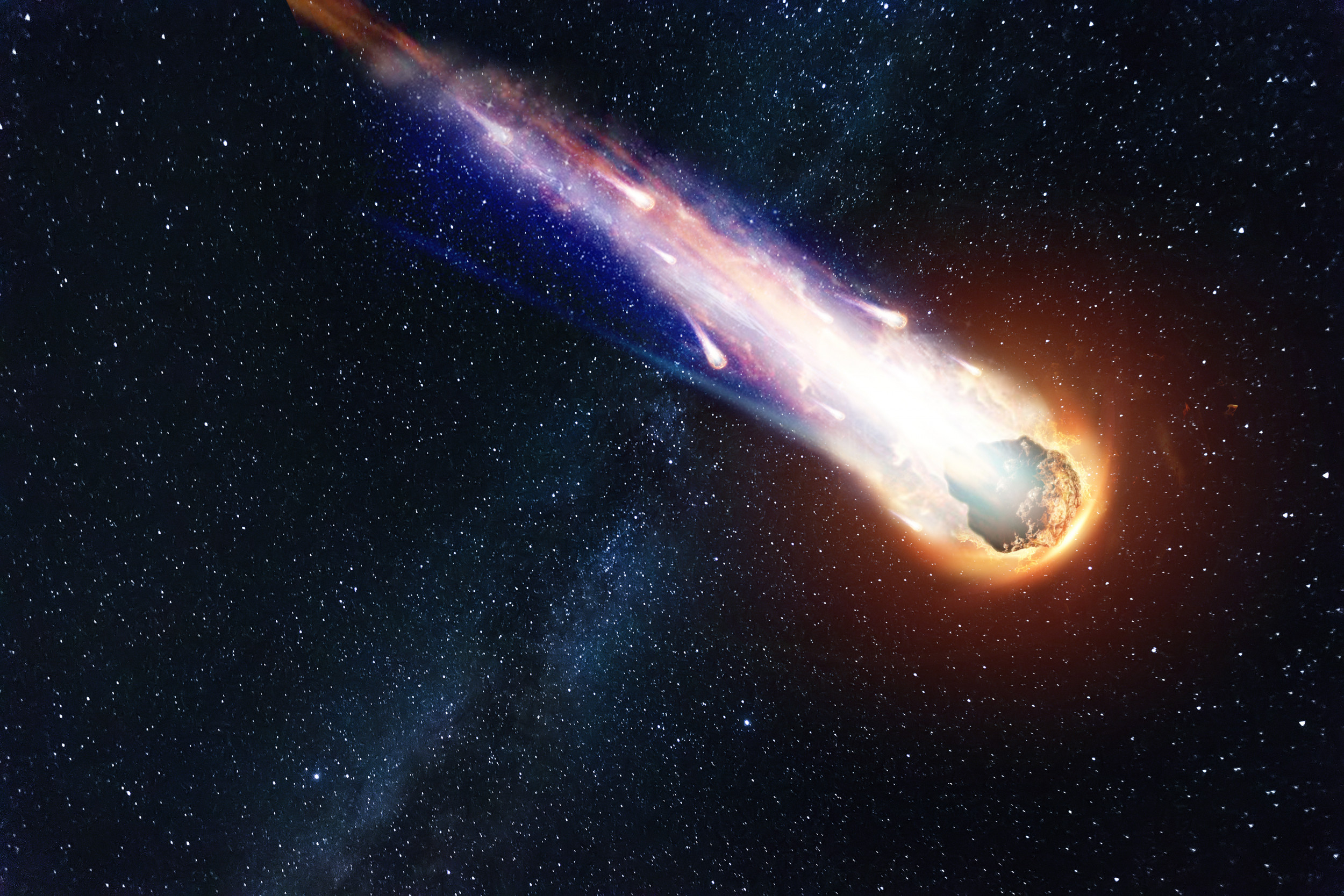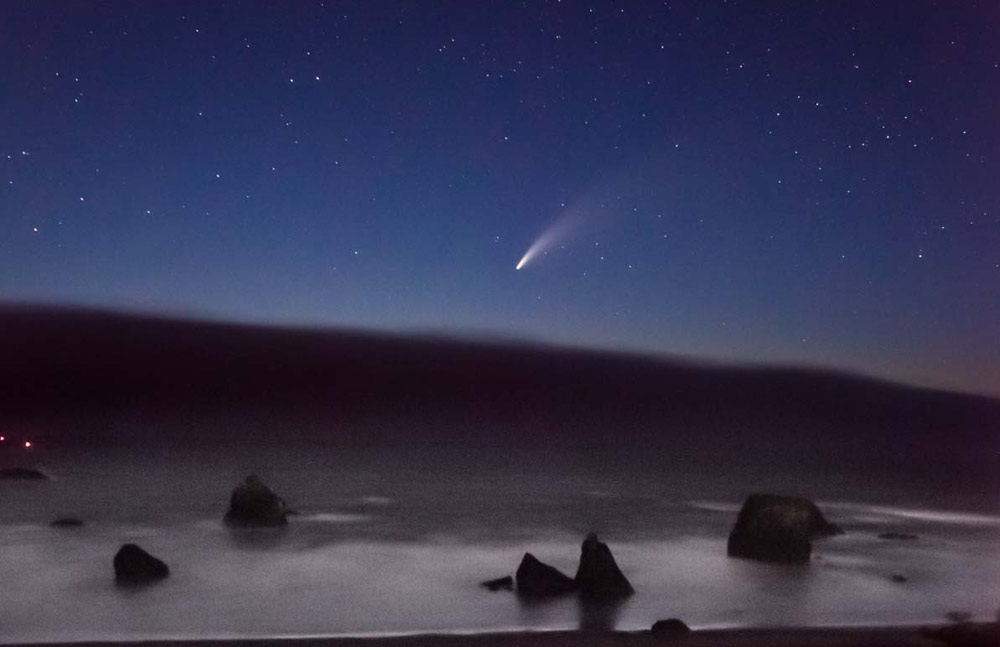The arrival of the Comet October 2025 is set to be one of the most breathtaking astronomical events in recent years. This celestial marvel promises to captivate sky watchers worldwide, offering a rare glimpse into the mysteries of the cosmos. As we approach this extraordinary phenomenon, it’s essential to understand its significance and how it will impact our understanding of space.
For centuries, comets have fascinated humanity with their glowing tails and unpredictable trajectories. The Comet October 2025 is no exception. Astronomers predict it will pass close enough to Earth to be visible to the naked eye, making it an unforgettable experience for stargazers. Whether you’re a seasoned astronomer or a curious beginner, this event is an opportunity to witness the beauty of our universe.
As we delve deeper into the details, you’ll discover why this comet is unique, what to expect during its appearance, and how to prepare for optimal viewing. Join us on this journey to explore the wonders of space and learn more about this celestial visitor set to grace our skies in 2025.
Read also:Unveiling The Artistry Sydney Sweeneys Bold Euphoria Nude Scene
Table of Contents
- What is a Comet?
- Comet October 2025 Overview
- Trajectory and Visibility
- Scientific Significance
- Historical Context of Comets
- How to Prepare for the Comet Viewing
- Recommended Tools and Equipment
- Debunking Common Myths About Comets
- Safety Tips for Observers
- Conclusion and Final Thoughts
What is a Comet?
Comets are icy celestial bodies composed of dust, rock, and frozen gases. Often referred to as "dirty snowballs," they originate from the outer reaches of our solar system, such as the Oort Cloud or Kuiper Belt. When a comet travels near the Sun, its ice begins to vaporize, creating a glowing coma and a spectacular tail that can stretch millions of kilometers.
Comets differ from asteroids in their composition and behavior. While asteroids are primarily rocky or metallic, comets have a significant ice component that makes them more volatile and visually striking. This distinction is crucial in understanding their role in the solar system and their potential to deliver valuable insights into the early universe.
Key Characteristics of Comets
- Composed of ice, dust, and rock.
- Develop a glowing coma and tail when near the Sun.
- Originate from distant regions like the Oort Cloud.
- Orbit the Sun in highly elliptical paths.
Comet October 2025 Overview
The Comet October 2025 is expected to make its closest approach to Earth in the latter half of 2025. This event is particularly exciting because it will be visible from various parts of the globe, offering millions of people the chance to witness its beauty. Astronomers have been tracking its trajectory for years, and the predictions suggest it will be one of the brightest comets in decades.
While the exact date of its peak visibility is yet to be determined, early estimates place it around late October 2025. During this time, the comet will pass within a safe distance of Earth, making it an ideal opportunity for observation. Its brightness and proximity will enhance the viewing experience, even for those without specialized equipment.
Why is Comet October 2025 Unique?
- Highly visible to the naked eye.
- Predicted to be one of the brightest comets in recent history.
- Offers a rare chance to study its composition and behavior.
Trajectory and Visibility
Understanding the trajectory of Comet October 2025 is critical for planning your observation. This comet follows an elliptical orbit around the Sun, and its path will bring it close to Earth in 2025. Astronomers use advanced telescopes and computational models to predict its exact location and brightness at different times.
For optimal viewing, it’s recommended to observe the comet from areas with minimal light pollution. Rural locations with clear skies provide the best conditions for witnessing its glowing tail and coma. Additionally, timing your observation during a new moon phase will enhance visibility, as the absence of moonlight reduces interference.
Read also:Unveiling The Enigma Keanu Reeves Wife
Factors Affecting Visibility
- Light pollution in urban areas.
- Moon phases and their impact on night sky visibility.
- Weather conditions, such as cloud cover and atmospheric clarity.
Scientific Significance
Comets like the one appearing in October 2025 hold immense scientific value. They serve as time capsules, preserving material from the early solar system. By studying their composition, scientists can gain insights into the conditions that existed billions of years ago. The presence of organic compounds in comets also raises intriguing questions about the origins of life on Earth.
Additionally, comets contribute to our understanding of solar dynamics. Their interaction with solar winds and radiation provides valuable data on the Sun’s behavior and its influence on surrounding space. Observing Comet October 2025 will offer researchers a unique opportunity to gather new information and refine existing theories.
Research Opportunities
- Analysis of comet composition and structure.
- Study of solar wind interactions and their effects.
- Investigation of potential connections to Earth’s water and organic molecules.
Historical Context of Comets
Throughout history, comets have been both feared and revered. In ancient times, they were often seen as omens or messages from the gods. The Great Comet of 1811, for example, inspired widespread speculation and even influenced literature and art. Over time, advancements in science have demystified these celestial bodies, but their allure remains unchanged.
One of the most famous comets is Halley’s Comet, which has been observed by humans for centuries. Its predictable return every 75-76 years has allowed astronomers to study its behavior in detail. Similarly, Comet October 2025 will add to the rich tapestry of comet research, providing new data for future generations.
Famous Historical Comets
- Halley’s Comet: Known for its periodic appearances.
- Great Comet of 1811: Captured the imagination of 19th-century societies.
- Comet Hale-Bopp: Visible to the naked eye for over a year in the late 1990s.
How to Prepare for the Comet Viewing
Preparing for the arrival of Comet October 2025 involves planning and gathering the necessary resources. Start by identifying a suitable viewing location, preferably away from city lights. Check local weather forecasts to ensure clear skies on the night of observation. Additionally, consider joining a local astronomy club or group to enhance your experience and share insights with fellow enthusiasts.
If you’re new to stargazing, familiarize yourself with basic astronomy concepts and terminology. Understanding terms like "magnitude" and "constellation" will help you better appreciate the event. Online resources and mobile apps can also assist in locating the comet and tracking its movement across the sky.
Tips for Optimal Viewing
- Choose a dark, open area for observation.
- Check weather forecasts and plan accordingly.
- Bring a star chart or mobile app to assist in locating the comet.
Recommended Tools and Equipment
While Comet October 2025 will be visible to the naked eye, using tools like binoculars or telescopes can enhance your experience. Binoculars are an excellent choice for beginners, offering a wider field of view and easier handling. For more advanced observers, a telescope with a good-quality eyepiece can provide detailed images of the comet’s coma and tail.
When selecting equipment, consider factors such as magnification, aperture size, and portability. Investing in a sturdy tripod is also advisable, as it helps stabilize your viewing device and reduces shake. Additionally, red-light flashlights are recommended for preserving night vision while consulting star charts or adjusting equipment.
Essential Tools for Comet Watching
- Binoculars for wide-field viewing.
- Telescopes for detailed observation.
- Red-light flashlights for nighttime use.
Debunking Common Myths About Comets
Despite scientific advancements, myths about comets persist in popular culture. One common misconception is that comets pose a direct threat to Earth. While collisions with large celestial bodies can be catastrophic, the likelihood of a comet impacting our planet is extremely low. Most comets pass safely through space, following predictable orbits.
Another myth is that comets emit harmful radiation. In reality, their glow is caused by the reflection and scattering of sunlight, making them safe to observe. Educating the public about these facts helps dispel unnecessary fears and promotes a greater appreciation for these natural wonders.
Myths vs. Facts
- Myth: Comets can destroy Earth. Fact: Most comets pose no threat to our planet.
- Myth: Comets emit dangerous radiation. Fact: Their glow is due to sunlight reflection.
Safety Tips for Observers
While observing Comet October 2025 is a safe and enjoyable activity, a few precautions can enhance your experience. Always choose a secure location for viewing, ensuring it is accessible and free from hazards. If you’re using equipment, set it up in advance to avoid fumbling in the dark.
Be mindful of local wildlife and respect nature during your observation. Carrying snacks, water, and warm clothing is advisable, especially if you plan to stay outdoors for an extended period. Lastly, remember to practice good hygiene and follow any guidelines related to public health and safety.
Safety Guidelines
- Select a safe and accessible viewing location.
- Set up equipment before dark to avoid accidents.
- Carry essentials like snacks, water, and warm clothing.
Conclusion and Final Thoughts
The arrival of Comet October 2025 represents a remarkable opportunity to connect with the wonders of the universe. By understanding its trajectory, significance, and how to prepare for its appearance, you can fully appreciate this celestial event. Whether you’re an amateur astronomer or simply someone who enjoys the night sky, this comet promises to leave a lasting impression.
We encourage you to share your experience with others by leaving a comment below or engaging with fellow enthusiasts on social media. For more articles on astronomy and related topics, explore our website and stay updated on the latest discoveries in the field. Remember, the universe is vast and full of mysteries waiting to be uncovered—start your journey today!
Source: NASA | ESA | Sky & Telescope


